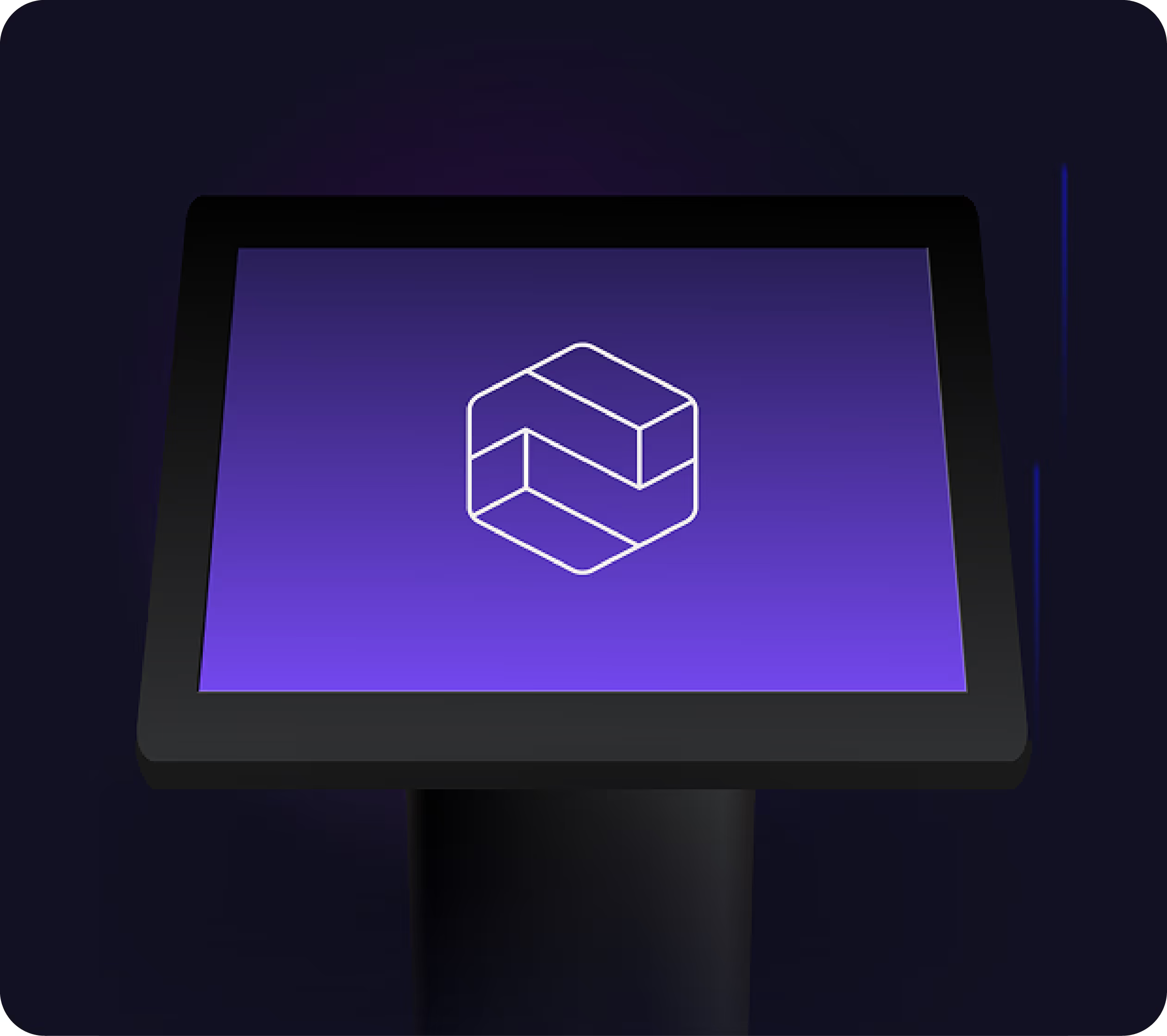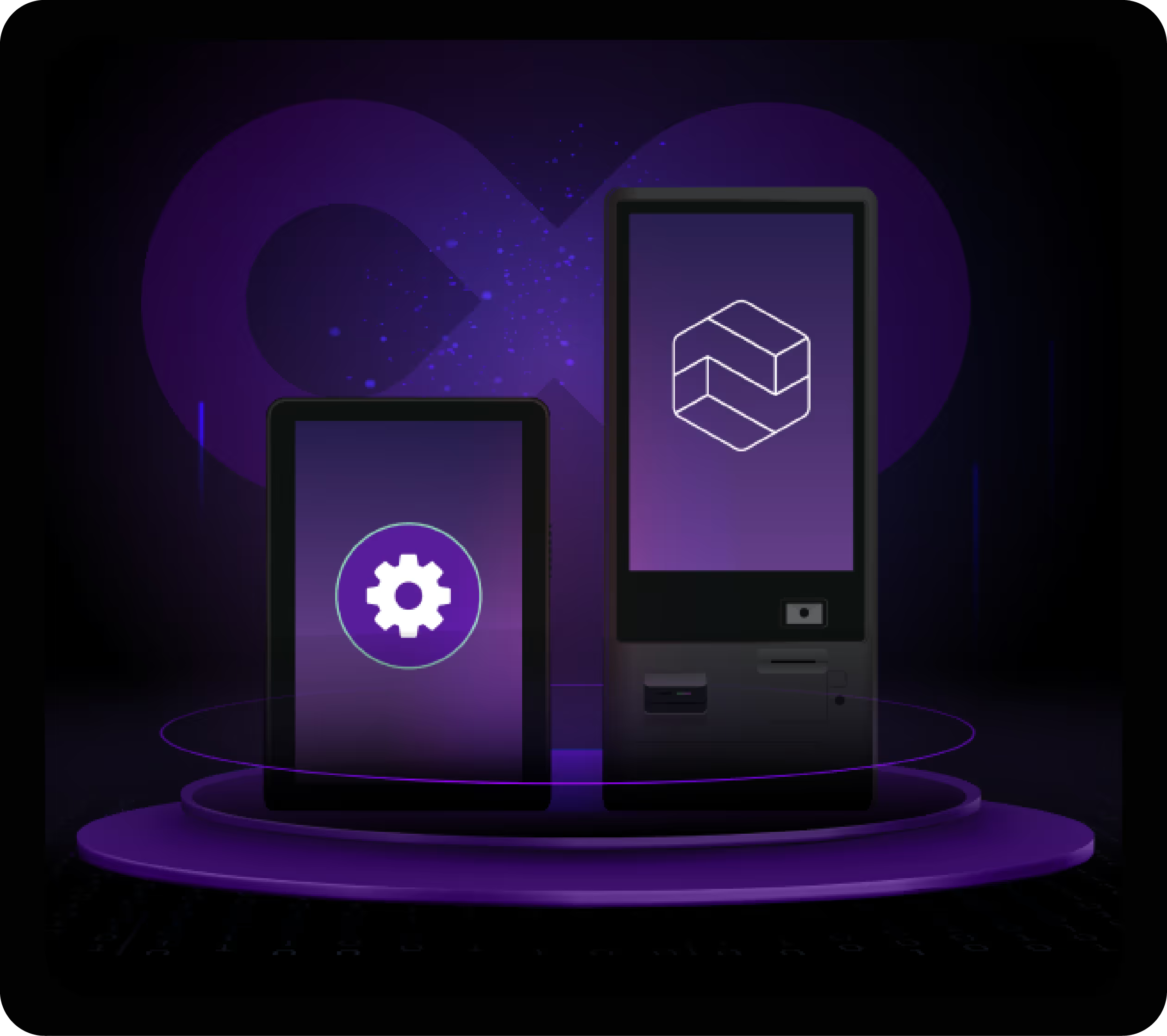Digital signage can be as simple as you want it to be or as intricate as you need it to be. That’s why combining the right device with the right management tools is so important. Whether you want an iPad in kiosk mode, an Android-powered TV, or a custom Linux box, you’re covered with Esper.

Digital signage for business use cases
Digital signage puts your business on center stage. Vibrant and engaging, it enables you to give the people what they want — real-time updates, essential product information, and wayfinding assistance. Because nothing is as universally embarrassing as wandering around like a lost tourist. You’re not saving lives here, but you are saving reputations, and that’s pretty commendable.
You can find digital signage just about anywhere. These dynamic displays are sure to be serving up info at your local QSRs (quick service restaurants), retail stores, shopping malls, and airports. And while being highly customizable and updatable, it can be complicated to know exactly what type of signage will best work for your use case. Especially when it comes to interactive signage, which has some overlap with kiosks. Don’t sweat it though, we’ve got some hot tips to help you out.


Digital signage can be anything it wants — big or small, square or round, just a sign, or interactive. The latter often struggles with an identity crisis — am I signage or am I a kiosk? For example, the interactive maps found at many large airports are a form of digital signage called digital menu boards, which is also a type of kiosk. Tricky, we know!
The difference between digital signage and kiosks ultimately comes down to how you’re using and managing the device. For example, a giant digital billboard probably doesn’t need to be locked to kiosk mode since a user accessing the underlying operating system is very unlikely. You just need a way to cycle through and update the content, making this a digital signage use case. If this is you, congrats, you’re in the right place!
Interactive signage in an airport, however, needs to be treated more like a kiosk. You don’t want someone rooting around your device settings instead of checking in for their flight. If this sounds more like your use case, check out our kiosk page.
Ready to put your content on the big (or moderately sized) screen? Here’s what to consider so you get something that actually fits your needs and requirements. Buyer’s remorse? Never heard of it.

Our hardware experts make finding the right hardware easy! Esper has guided thousands of customers to develop efficient, scalable device fleets that meet their needs. With our robust partner catalog and vast hardware support we can always find a solution.



Management considerations for company digital signage
Once you’ve found the right digital signage, it’s time to manage them. An MDM (Mobile Device Management) solution is a great tool to monitor and protect your dynamic displays. But there’s no such thing as a one-size-fits-all MDM solution. Some key factors to consider when looking for the right MDM:











Upgrading the retail experience with digital display pricing
Esper partnered heavily with our engineering teams to pilot digital signage strips in our stores to display pricing on retail shelves. Esper made it easy to launch our custom app and create a delightful experience for our customers.


Optimizing back and front-of-house operations for restaurants
Esper is an indispensable tool for managing our devices. It allows us to effectively manage our devices both individually and as a cohesive unit. When deciding on hardware for our fleet, our first priority is ensuring it’s compatible with the Esper platform.



Remote viewing devices through the console makes troubleshooting or assisting users possible without needing a 3rd party subscription. Support for kiosks and those with multiple apps, plus the ability to provide access to select device settings, ensure users have access to everything they need to utilize the device more completely without sacrificing security.
Digital signage software is a program that allows users to control their digital signage displays. This usually includes remote control of the signage, its assets, schedule, and more.
Digital signage hardware, also called a digital signage player, is a device similar to a set-top box that connects to a TV, monitor, or other display to show digital signage content. These can also be built into display specifically designed for digital signage.
A digital signage platform is used to manage digital signage and the content it displays. This includes scheduling and content management.
Android digital signage is a digital signage device that runs the Android operating system.
An interactive touch display is a touch screen device designed to provide custom experiences and interactions. It can be an interactive digital signage display or a kiosk.